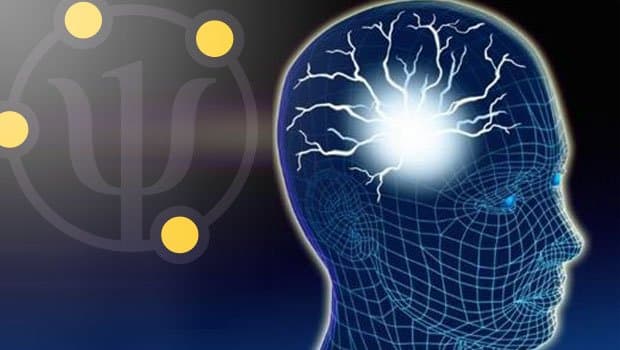The complex surgical operation of transplanting organs distinguishes itself from any other operation for the profound implications induced by the grafting of a portion of another person into the body of the patient. What counts the most, apart from the experience of illness, is how one feels having inside one’s body an organ to be reintegrated into one’s own corporal image and which could, therefore, favour the rejection of the organ or not. In fact the main problem of the transplant, from a psychological point of view is that, as in the illness, the wholeness and the unity of the corporal image is broken: something which does not work is extricated but which is one’s own and is replaced with something which works but is not of one’s own. In this biological operation, which occurs in a relatively brief amount of time, six or seven hours in the operating theatre, the patient must then undergo the complex task of mental reconstruction: that is to say the recomposition of the primary mental image of the Ego which the transplant imposes “suddenly” in order to maintain a sense of the subject’s identity. The process of reconstructing one’s own identity, which accompanies the subject towards regaining the unity of his own corporal image, is long and difficult; but so that the sense of his own identity can be reconstructed it is necessary that the individual completes a slow and complex task of psychic integration or more so an “incorporation” of the transplanted organ. Therefore, there is no transplant, especially if from a corpse, which does not raise psychological and emotional vicissitudes and paths in the receiver and while some patients are able to find a way of integrating the new organ, others almost never manage to do so completely. Conditions which are indispensible so that this process of assimilation can happen are that the patient has elaborated and overcome everything to do with the loss of his own organ and that he feels no guilt towards the donor. In fact, often the receivers do not manage to assimilate the organ into their own psychosomatic identity and continue to see it as a foreign body, prosthetic and artificial up to the point of objectively seeing it as a persecutor; in the latter case, the transplanted organ can determine a certain type of confusion in the receiver’s corporal image and for this reason it can be experienced in an archaic way or as a fantasy: or as a hostile object, destructive and persecutive or as an object invested with strength and vitality capable of arousing feelings of rebirth. From this we can deduce that the transplanted organ, as well as not being biologically inert neither is it psychologically, because it always causes a problematic psychological relation between the patient and the organ and via it, also with the donor. Some authors, in fact, even hypothesize that the absence of the resolution of that relationship could determine the biological rejection of the organ, in other words, the psychological factors can condition the intensity of the reject reaction and can even induce its insurgence. Through the rejection the patient could manifest the difficulty of psychologically integrating the transplanted organ. The psychological reject is, as we have said, possible if the patient does not feel the new organ as a part of himself. In fact, according to Chiesa 1,the possibility of integrating the donated organ into one’s own corporal image passes through the progressive maturing of the defensive processes, in other words, the patient’s abandoning of archaic mechanisms, such as denial, and the patient’s use of the Ego’s capabilities of functioning according to the secondary processes of objectiveness and neutralization. Only in this way can the transplant, from a cognitive – affective point of view, be achieved through slow metabolizing, starting from the initial stage in which the organ is seen as a “foreign body”, an ambivalent object “good to incorporate” and at the same time “invested with diffidence” because of its intrusive state, across the phases of partial incorporation and reaching, therefore, the complete incorporation when the organ has become an integral part of the physiological functioning and, therefore, of the corporal image; and so the new organ becomes an integral part of the sense of Self 2. In reality, other authors make an ulterior distinction between incorporation and introjection. In fact, in the case of organ transplants there is not only the incorporation of an organ, in other words the passage of something from the external to the internal, therefore, only overcoming the somatic limit but there is also a much more complex process, the introjection which includes both the somatic and psychic aspects and which allow, therefore, the psychic integration of the organ and so the restructuring of the Self. L. Sarno 3 establishes a significant distinction between incorporation and introjection. He sustains that the incorporation is put into act when the elaboration of grieving is not possible due to the ambivalent and narcissistic relation of the subject towards the lost object and involves the denial of such object, so that the object continues to live in the Self, thanks to the fact that it is swallowed up in a phantasmatic way, hence why the incorporation does not foresee the painful work of the remodelling of the Self facing the loss. The introjection, on the other hand, using a more mature mechanism, would allow an appropriate elaboration of the grieving and therefore the remodelling of the Self facing the loss of the object. However, in order that an individual can make use of the introjection it is fundamental that he has acquired the capability of controlling his frustration. If this capability is missing, the void between the Self and the object cannot be tolerated and so the individual resorts to the incorporation. Other authors, such as Crombez and Lefebvre 4, claim that, to explain the process of the integration of the donated organ into the corporal image of the receiver, it is not correct to speak about introjection or incorporation but that it is more correct to introduce another mental function: the amalgamation. The incorporation, in fact, conveys the passage from the external to the internal through corporal openings, whilst the introjection forms a condition of internalization experienced essentially on a mental level: the amalgamation includes both aspects of the experience, somatic and mental. Some characteristics of this mental function make it similar to the primitive oral incorporation and would allow, therefore, according to the authors, to explain the fears that often surge in the receivers, connected to the phantasy of being able to acquire with the “new” organ also the physical and psychological characteristics of the donor. An example 5 of this intention is demonstrated by a case, in the United States, of a representative of the Ku Klux Klan who registered with an association for the assertion of the rights for coloured people after having found out that the kidney he had received belonged to the corpse of a black person. Such a totalizing experience can also give life to persecutory experiences, to the point of structuring a real delirium. Only at a later moment, the possibility of separating the image of the donor from the organ received, will encourage a progressive amalgamation with the possibility of integration within one’s own corporal image and narcissistic libidic investment. Muslin 6 too believes that the assimilation process of the “new part” implicates the mechanisms of incorporation, introjection and identification. He believes that three phases of internalization exist: the initial stage is that of the “foreign body” even if this can arouse protective feelings (in other words, it is felt as the organ which consents life); the following stage is that of the partial incorporation in which the patient manifests less tendency to consider the organ as extraneous, whilst the final stage or the complete incorporation, is characterized by the acceptance of the new organ to the point that there is no longer a spontaneous awareness of it, what, somehow, could be called a kind of “passive identification”: not the patient which becomes in some way similar to the donor but the organ of the donor which is felt by the patient to be a part of himself.
Castelnuovo-Tedesco 7 believes, in fact, that the transplanted organ immediately obtains its own space inside the representative world of the receiver: it connects, from the beginning, with the other internalized objects, which in turn, become modified by this new presence. The transplanted organ does not configure, therefore, as a “spare part” but it symbolically represents the internalization of another human being.
An attempt of further elaborating such a hypothesis is summarized in the micropsychoanalytic research by Nicola Peluffo8. According to this author, the illness can totally or partially replace the persecutor. We can affirm that “the illness binds the conflict and canalizes the aggressiveness, so when the illness is clearly localized and can be eliminated, for example by a surgical operation, the anxiety no longer bound, can, at least temporarily, shift itself to the psychic canal. Often, therefore, after an initial euphoria for the regained health, the patient who has undergone the transplant finds himself once again dealing with the hostile problems that he had constrained in the organic syndrome. When the affected organ is ablated and a new one is transplanted, all of the precedent elaboration is disturbed and it is necessary to make new attempts to re-establish the homeostasis and therefore to retain a transplanted organ (hence encourage a facilitating reaction) it is necessary to carry out a narcissistic investment. In other words, for identification, allow the new part to enter into the imaginary old structure of the Ego which will necessarily modify itself ” 9. An idea which appears constantly 10 in those who have received a transplant is, that of stealing from the donor a vital part and which, as a consequence, the donor himself has been harmed or killed. These thoughts are based on the unconscious senses of guilt, together with the fear of being punished. “The “taking” a part of someone else, materializes the primal phantasies of castration and an unconscious situation is formed similar to the one observable in the analysis of subjects in which the sexual fetishistic vicissitude is very intense, sustained by the unconscious phantasy of having stolen the penis from the mother” 11. A significant case of which Castelnuovo-Tedesco speaks about in Organ Transplant, Corporal image, Psychosis (1973), is that of a patient who had a psychotic reaction to a heart transplant. He began to complain that not only had his heart been taken from another person but that this person was a woman. In the moment of deepest regression being delirious he said that he had stolen the heart from a woman and that the woman was his mother. It was the donor-mother who had returned to reclaim that which belonged to her and, the patient claimed, when she had taken back her heart she would have absorbed and incorporated him completely, in the same way that he had done with the heart of that very woman. This case can be explained making reference once again to the micro-psychoanalytic theory by N. Peluffo 12, the Italian master of micropsychoanalysis, who claims that in the same way as the pregnancy is conditioned by the interaction of phantasms (phantasies) stimulus-answer existing between the mother and the foetus, in a parallel manner the grafting of an organ is a kind of pregnancy: the organ, not one’s own (just as the foetus) will integrate better if a process of deep identification is established between the host and the donor. In the case specified, “the new part (the heart) which replaced the old one, whose illness somatically bound the conflict, the anxiety and the aggressiveness, became once again the site of the conflict which took back its psychic aspect and was shifted into the imaginary and expressed in the delirium of mutual persecution between him and the woman-mother” 13. A reactivation is verified of what N. Peluffo defines as the basis conflict, in other words that between soma and psyche, whose beginning at a somatic level is outlined when the defensive reject reaction of the maternal organism is contrasted by the narcissistic investment which the mother makes on the child in her womb inasmuch as completion of her psychosomatic unity and reparation of her experiences of separation or loss. Given that the micropsychoanalysis 14 admits that a pathological somatic process has its own unconscious manifestation which is elaborated in the imaginary and is recognisable through dreams and that during the pregnancy the foreign organism (the child) triggers, in the mother, specific oneiric manifestations, even the presence of a group of foreign cells, with their own different genetic heritage, would give origin to a similar phenomenon.
A fact emerges from all of this work which is obvious but not for this reason less important: a transplant is an extremely important event because it is the only one, among all the therapeutic experiences that a patient can undergo in the vast field of medicine, that involves and links two people in an extreme limit of physical integration, one of whom, the receiver with all his vicissitudes, who through the experience of his acute illness, has been scarred by the pain, the sense of impotence and from the fear of death. Then we have the donor, alive or dead, “the Other one”, also a carrier of his vicissitudes, often a stranger and for this very reason even more disturbing. Two existences meet dramatically at the precise moment when the receiver is physically and psychologically most vulnerable, torn between the awareness that his uncertain hopes for survival depend on the Other person and his fear, more or less unconscious of that extreme intimacy, hence Another person becomes part of himself. The living donor is protagonist of a generous deed, but which can be harmful to him on a physical level and which can involve him emotionally in various measures and with many consequences. Then we have the relatives, involved in various ways in an experience that usually distorts, relationships and the prospects of the whole family, but which contemporaneously must perform the irreplaceable function of collaboration with the doctors and of support and assistance for the patient. And finally the doctors who, on one hand, each with their own professional duties, have to manage the very complex phases of the transplant and often make decisions of great responsibility and on the other hand they are the interlocutors for the patient and for the relatives and are continually asked for reassurance and to whom the responsibilities for the result of the transplant will be attributed to in the end.Generally, complex, difficult and often adversarial ties are formed between all these people and it is, therefore, evident why psychological assistance plays such an important part with the role of observing, identifying problems, indicating the most adequate procedures, helping all those involved, facilitating their relationships, encouraging the reintegration of the transplant into a normality which, in any case, will not be the precedent normality.
© Elena Consoli
translated by Linda de Nardo
Notes:
1 Chiesa S. – Il trapianto d’organo: crisi e adattamento psicologico – Psichiatria e Medicina, 10, 15, 1989. ![]()
2 House R. M. e coll. – Psychiatric consultation to organ transplant services – Reviews of Psychiatry, 1990, 9, 515-536. ![]()
3 Sarno L. – La scorza ed il nocciolo (N. Abraham e M. Torok). Una nota su introiezione ed incorporazione: radici e natura della cripta – Riv. di Psicanalisi, anno XLI, 1995, n. 2, pp. 294-302. ![]()
4 Lastrico A., Politi P.L., Barale F. – Sul vissuto del trapianto cardiaco-– Minerva Psichiatrica, 1994, 35, 3, 139-145. ![]()
5 House R. M. e coll. – Op. cit. ![]()
6 Muslin H.L. – On acquiring a kidney – Am. J. Psychiatry, 1971, 127, 1185-1188. ![]()
7 Castelnuovo-Tedesco P. – Organ transplant, body image, psychosis – The Psychoanalytic Quarterly, 1973, 42, 3, 349-363. ![]()
8 Peluffo N. (1983) – Immagine e fotografia – Borla, 1999. ![]()
9 Peluffo N. – Op. cit., pag.141. ![]()
10 Ibidem. ![]()
11 Ibidem. ![]()
12 Ibidem. ![]()
13 Ibidem, pag. 124. ![]()
14 Ibidem. ![]()
La dott.ssa Elena Consoli è nata a Catania nel 1979. Ha conseguito nel 2004 la laurea in Psicologia (V.O.) ad indirizzo clinico e di comunità presso la facoltà di Scienze della Formazione di Palermo con una tesi dal titolo : “ la poliedrica problematica dei trapianti d’organo”.
Nel 2014 ha conseguito presso l’Istituto “Empatèia” di Messina la specializzazione in Psicoterapia Umanistica approccio rogersiano.
Ha acquisito una notevole esperienza nell’ambito della psicooncologia e della psicologia dei trapianti d’organo rivolti sia ad adulti che a bambini, grazie alla collaborazione con vari reparti di presidi ospedalieri di Catania.
Svolge attività di ricerca in collaborazione con il Centro Ricerche della rivista multimediale “Scienza e Psicoanalisi” ed è autrice di lavori scientifici.
Ha conseguito un master in Disturbi Specifici dell’Apprendimento e Disturbi dell’Età Evolutiva e possiede una notevole esperienza didattica e psico-educativa con bambini con pluriminorazione anche sensoriale.
E’ presidente dell’Associazione Culturale “ Kairòs – Il Tempo Giusto” di Catania.
E’ stata relatrice in convegni regionali ed internazionali.
Svolge attività libero professionale.












